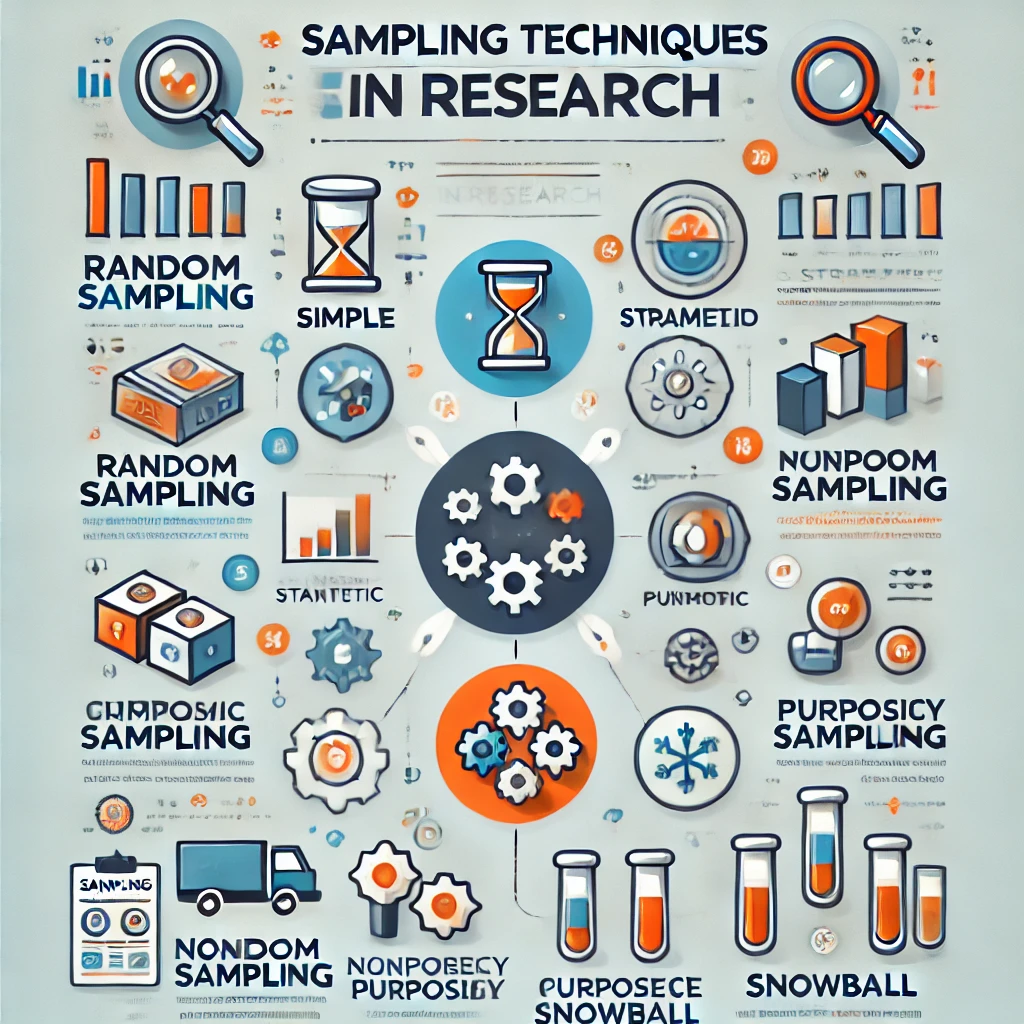Introduction
Sampling techniques are fundamental to the integrity of any research study. They determine how well the research reflects the larger population, impacting the validity of the results. This article explores various sampling techniques, both random and non-random, and offers guidance on using MyWordAi.com to facilitate your research process.

What are Sampling Techniques?
Research sampling refers to the process of selecting a subset of individuals from a population to estimate characteristics of the whole group. Proper sampling is crucial because it influences the accuracy and reliability of research findings. Sampling techniques can be categorized into two primary types: random sampling and non-random sampling.
Random Sampling
Random sampling involves selecting individuals from a population in such a way that each individual has an equal chance of being chosen. This method is crucial for achieving unbiased results. There are several types of random sampling methods:
- Simple Random Sampling: Every member of the population has an equal chance of selection. This can be achieved using random number generators or lottery systems.
- Stratified Random Sampling: The population is divided into homogeneous subgroups, and random samples are drawn from each group. This ensures representation across key demographics.
- Systematic Random Sampling: Researchers select every nth individual from a list of the population, starting from a random point.
While random sampling enhances the representativeness of the sample, it can be resource-intensive and may require comprehensive population lists.
Non-Random Sampling
In contrast, non-random sampling does not give all individuals an equal chance of being selected. It is often easier and quicker to implement, but it may introduce bias. Key non-random sampling methods include:
- Convenience Sampling: This involves selecting individuals who are easiest to access, such as friends or colleagues. While cost-effective, it can lead to skewed results.
- Purposive Sampling: Researchers intentionally select participants based on specific characteristics, ensuring that the sample is relevant to the research objectives.
- Snowball Sampling: This method relies on existing participants to recruit future subjects, which is useful for hard-to-reach populations.
Although non-random sampling can be practical, it often limits the generalizability of the findings.
Choosing the Right Sampling Method
When selecting sampling techniques, researchers should consider factors such as the research question, the target population, the resources available, and the desired level of precision. The choice of sampling method can significantly influence the outcomes of research, underscoring the importance of careful selection.
Sampling Techniques: Sample Research Section/Topic
Title: The Importance of Sampling Techniques in Research
Sampling techniques are the backbone of quantitative research. By selecting an appropriate method, researchers can obtain data that accurately reflects the population. This study explores various sampling techniques, emphasizing their significance and applicability in different research scenarios.
How MyWordAi.com Can Help
For researchers seeking to streamline their writing process, MyWordAi.com is an invaluable resource. MyWordAi is an automated academic writer powered by ChatGPT, designed to assist researchers in crafting their papers without needing to learn AI prompting.
Step-by-Step Guide to Using MyWordAi.com for Writing on Sampling Techniques
- Visit MyWordAi.com or Download the App:
- Use this link to install the app: MyWordAi on Google Play.
- Log in or Sign Up:
- Create a new account or log in with existing credentials.
- Access the Complete Research Writer Tool:
- Navigate to the “Sampling Technique” section from the dashboard.
- Enter Your Research Topic:
- Specify your focus on sampling techniques in your research.
- Input Your Research Question and Objectives:
- Provide details that will guide the AI in generating relevant content.
- Generate Content:
- Use the automated writing tool to create structured and coherent content based on your inputs.
- Review and Edit:
- Ensure the generated content aligns with your research needs and make any necessary adjustments.
By following these steps, you can leverage the power of MyWordAi.com to facilitate your research writing, allowing you to focus more on analysis and insights rather than getting bogged down by the writing process.
Conclusion
In summary, understanding sampling techniques is vital for any researcher aiming to achieve valid and reliable results. Both random and non-random sampling methods have their advantages and limitations, and choosing the right one is crucial for the success of your study. For an effortless writing experience, consider using MyWordAi.com, your automated academic writer that simplifies the research process.
Start enhancing your research writing today by using MyWordAi.com! Download the app now: MyWordAi on Google Play.